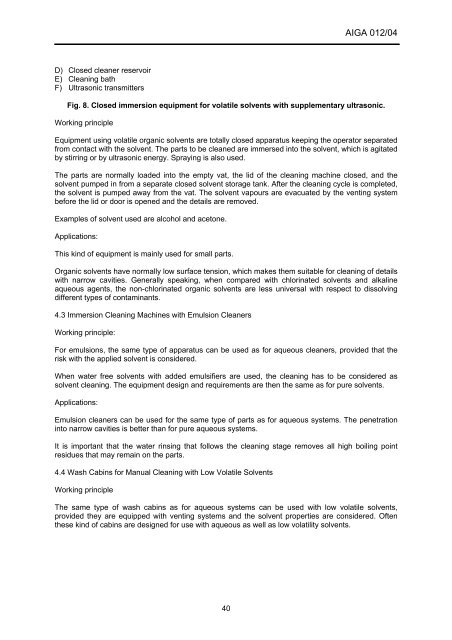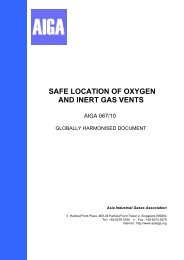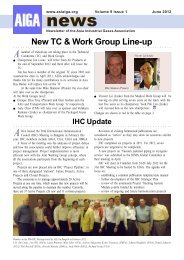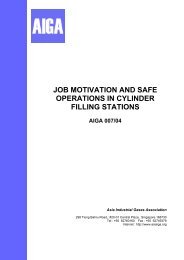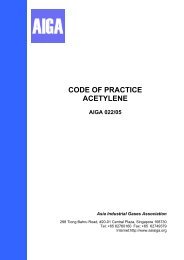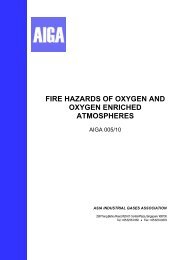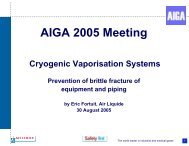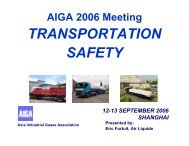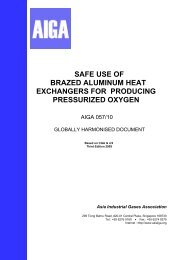CLEANING OF EQUIPMENT FOR OXYGEN SERVICE - AIGA
CLEANING OF EQUIPMENT FOR OXYGEN SERVICE - AIGA
CLEANING OF EQUIPMENT FOR OXYGEN SERVICE - AIGA
Create successful ePaper yourself
Turn your PDF publications into a flip-book with our unique Google optimized e-Paper software.
D) Closed cleaner reservoir<br />
E) Cleaning bath<br />
F) Ultrasonic transmitters<br />
40<br />
<strong>AIGA</strong> 012/04<br />
Fig. 8. Closed immersion equipment for volatile solvents with supplementary ultrasonic.<br />
Working principle<br />
Equipment using volatile organic solvents are totally closed apparatus keeping the operator separated<br />
from contact with the solvent. The parts to be cleaned are immersed into the solvent, which is agitated<br />
by stirring or by ultrasonic energy. Spraying is also used.<br />
The parts are normally loaded into the empty vat, the lid of the cleaning machine closed, and the<br />
solvent pumped in from a separate closed solvent storage tank. After the cleaning cycle is completed,<br />
the solvent is pumped away from the vat. The solvent vapours are evacuated by the venting system<br />
before the lid or door is opened and the details are removed.<br />
Examples of solvent used are alcohol and acetone.<br />
Applications:<br />
This kind of equipment is mainly used for small parts.<br />
Organic solvents have normally low surface tension, which makes them suitable for cleaning of details<br />
with narrow cavities. Generally speaking, when compared with chlorinated solvents and alkaline<br />
aqueous agents, the non-chlorinated organic solvents are less universal with respect to dissolving<br />
different types of contaminants.<br />
4.3 Immersion Cleaning Machines with Emulsion Cleaners<br />
Working principle:<br />
For emulsions, the same type of apparatus can be used as for aqueous cleaners, provided that the<br />
risk with the applied solvent is considered.<br />
When water free solvents with added emulsifiers are used, the cleaning has to be considered as<br />
solvent cleaning. The equipment design and requirements are then the same as for pure solvents.<br />
Applications:<br />
Emulsion cleaners can be used for the same type of parts as for aqueous systems. The penetration<br />
into narrow cavities is better than for pure aqueous systems.<br />
It is important that the water rinsing that follows the cleaning stage removes all high boiling point<br />
residues that may remain on the parts.<br />
4.4 Wash Cabins for Manual Cleaning with Low Volatile Solvents<br />
Working principle<br />
The same type of wash cabins as for aqueous systems can be used with low volatile solvents,<br />
provided they are equipped with venting systems and the solvent properties are considered. Often<br />
these kind of cabins are designed for use with aqueous as well as low volatility solvents.


